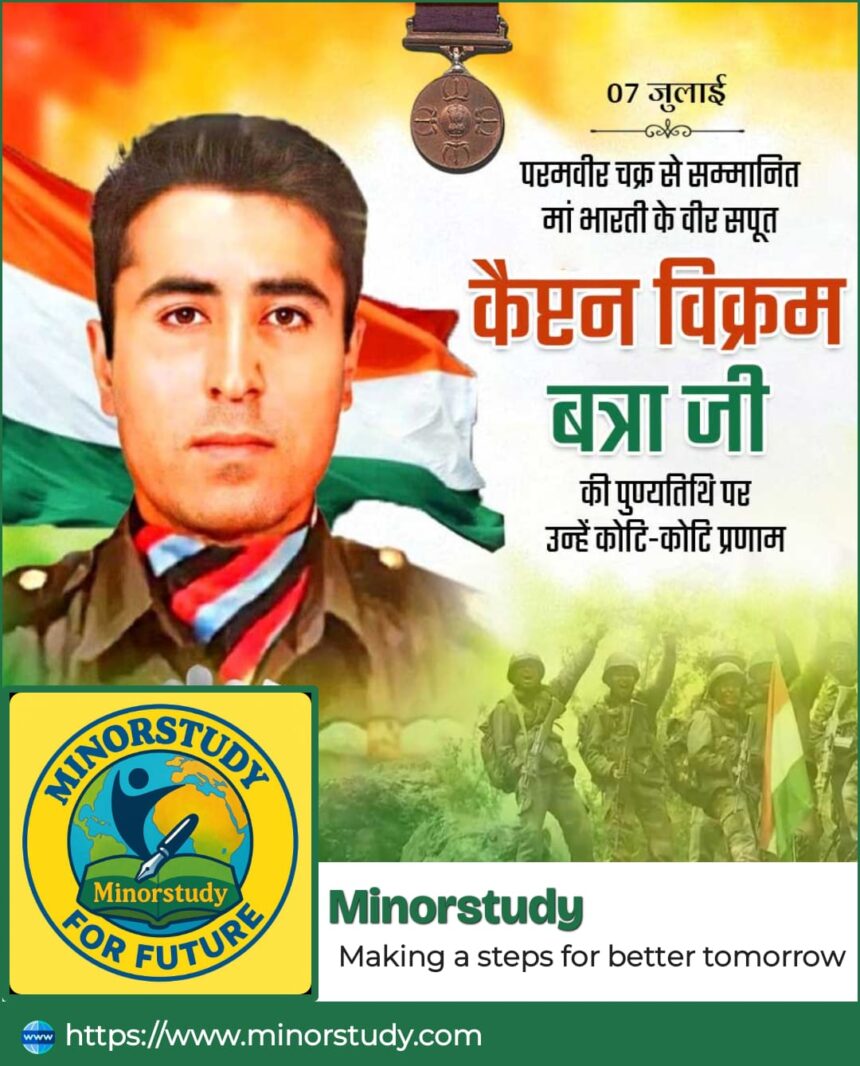11 Fearless Facts That Immortalize Captain Vikram Batra: The Braveheart Who Redefined Patriotism
“Either I will come back after hoisting the tricolour, or I will come back wrapped in it.” – Captain Vikram Batra
India will never forget these words—spoken by one of its most valiant sons, Captain Vikram Batra, whose heroism during the Kargil War of 1999 left an indelible mark on the heart of the nation.
- 🎖️ Introduction: Who Was Captain Vikram Batra?
- 🗓️ Timeline of Captain Vikram Batra’s Life
- 📚 History and Background
- 🏔️ Kargil War & Heroic Operations
- 🔍 11 Fearless and Inspiring Facts About Captain Vikram Batra
- ❓ FAQs
- 🌟 Significance in National and Daily Life
- 🎯 Key Takeaways and Important Points
- 💬 Wishing and Tribute Message
- 🧭 Conclusion: A Life That Teaches, A Legacy That Lives On
On this emotionally charged tribute, let us walk through the history, significance, timeline, and impact of Captain Batra’s life—a life full of courage, sacrifice, love, and undying patriotism.
🎖️ Introduction: Who Was Captain Vikram Batra?
Captain Vikram Batra (1974–1999) was an officer of the Indian Army, serving in the 13 Jammu and Kashmir Rifles. He gained fame—and eternal reverence—for his heroic role in the Kargil War, particularly in the capture of Point 5140 and Point 4875, two crucial peaks during the conflict.
His code name “Sher Shah”, given by Pakistani forces, underlined his fearless reputation. He was posthumously awarded the Param Vir Chakra, India’s highest military honour.
🗓️ Timeline of Captain Vikram Batra’s Life
| Year | Event |
|---|---|
| 9 Sept 1974 | Born in Palampur, Himachal Pradesh |
| 1995 | Joined Indian Military Academy, Dehradun |
| Dec 1997 | Commissioned into 13 JAK Rifles |
| May–July 1999 | Kargil War bravery at Point 5140 and Point 4875 |
| 7 July 1999 | Martyred while rescuing a fellow officer |
| 15 Aug 1999 | Posthumously awarded Param Vir Chakra |
📚 History and Background
Born into a humble middle-class family, Vikram was the son of G.L. Batra, a school principal, and Kamal Kanta Batra, a school teacher.
A bright student and athlete, he also held a Green Belt in Karate and represented his school in table tennis at the national level.
After earning a Bachelor’s degree in Science, he enrolled for M.A. in English, but his love for the uniform took him to the Indian Military Academy.
His leadership qualities, bravery, and infectious energy were apparent from his training days.
🏔️ Kargil War & Heroic Operations
🔥 Operation Vijay (May–July 1999)
The Kargil War broke out when Pakistani soldiers and militants occupied Indian posts along the Line of Control (LoC). Captain Batra’s unit was deployed in the Dras sector to evict infiltrators from Point 5140 and Point 4875.
1️⃣ Battle for Point 5140
Batra volunteered to lead the assault team.
Despite facing enemy gunfire and rugged terrain, he and his team recaptured the peak.
His victory message: “Yeh Dil Maange More!” became a war cry for India.
2️⃣ Battle for Point 4875
One of the toughest peaks due to steep slopes and enemy advantage.
Even after being injured, Batra rescued another soldier and charged ahead.
He was martyred by a sniper while saving a junior officer.
🔍 11 Fearless and Inspiring Facts About Captain Vikram Batra
He was a twin: Vikram had an identical twin brother, Vishal, to whom he was deeply attached.
He chose the army over a merchant navy career, turning down a lucrative job.
His call sign “Sher Shah” was feared by the enemy.
Batra’s motto was always “Live by chance, love by choice, and kill by profession.”
He was engaged to his college love, Dimple Cheema, who never married after his martyrdom.
He scaled steep vertical cliffs under heavy firing to capture enemy-held positions.
He was known for his humour and humanity even in the toughest battle moments.
The quote “Yeh Dil Maange More!” became symbolic of India’s victorious spirit.
His bravery is part of military training case studies across academies in India.
He was only 24 years old when he sacrificed his life for the nation.
His memory is immortalised in the biopic “Shershaah”, where actor Sidharth Malhotra portrayed him.
❓ FAQs
Q1. What was Captain Vikram Batra’s rank at the time of the Kargil War?
He was a Captain in the Indian Army, serving in the 13 JAK Rifles.
Q2. What awards did he receive?
He was posthumously awarded the Param Vir Chakra for his bravery in the Kargil War.
Q3. What is his legacy today?
Captain Batra is a symbol of youthful patriotism, heroism, and sacrifice. His life inspires millions of Indians and defence personnel.
Q4. Is there any memorial built in his name?
Yes, several roads, schools, and parks are named after him. A statue stands at Param Yodha Sthal, Delhi.
🌟 Significance in National and Daily Life
In National Life:
Emblem of courage: His story is part of textbooks, films, and patriotic events.
Youth icon: His character resonates with those preparing for NDA, CDS, and civil services.
Kargil Vijay Diwas (July 26) is celebrated in part to honour his sacrifice.
In Personal Life:
His journey teaches:
Selflessness over self-interest
Pride in one’s nation and duty
Valour in the face of fear
🎯 Key Takeaways and Important Points
Bravery knows no age—Captain Batra was only 24.
Real heroes don’t wear capes—they carry rifles and selfless intent.
His actions saved lives and turned the tide of the Kargil War.
His love story reflects true devotion, both to duty and heart.
His story is a lesson in living fearlessly, with honour and impact.
💬 Wishing and Tribute Message
“Salute to the Lionheart of India!
Jai Hind to our Sher Shah – Captain Vikram Batra.
Your life continues to guide every soldier and every citizen of this nation.”
🙏 Wishing you all the spirit of bravery, patriotism, and selfless love on this day of remembrance and honour.
🧭 Conclusion: A Life That Teaches, A Legacy That Lives On
Captain Vikram Batra life was short, but its impact was boundless. He showed us that true patriotism is not in words but in action. Whether you’re a soldier, student, parent, or youth, his story has something to offer:
The courage to fight
The will to lead
The love to sacrifice
As citizens of this great country, we carry the responsibility of remembering his sacrifice not only with emotional tributes but with ethical living, unity, and gratitude.








